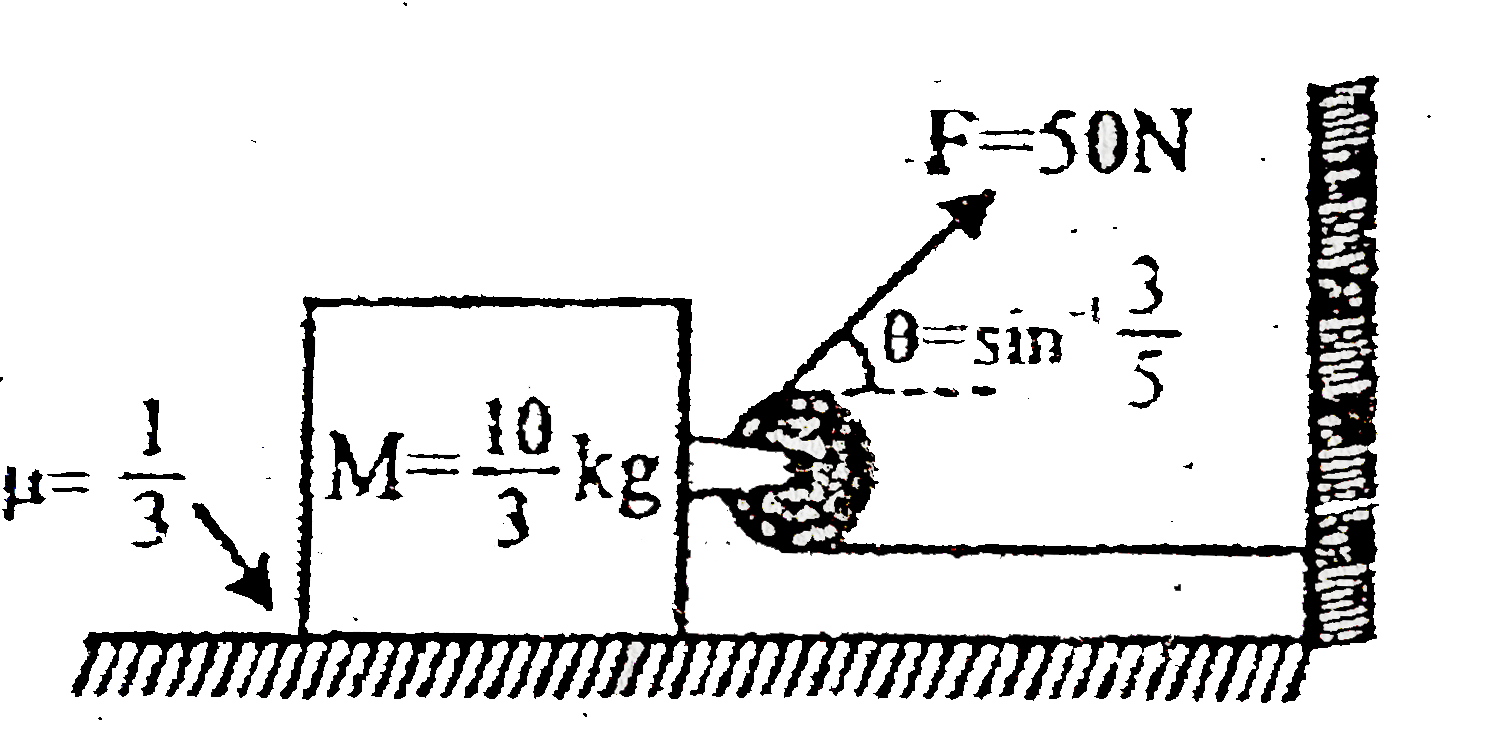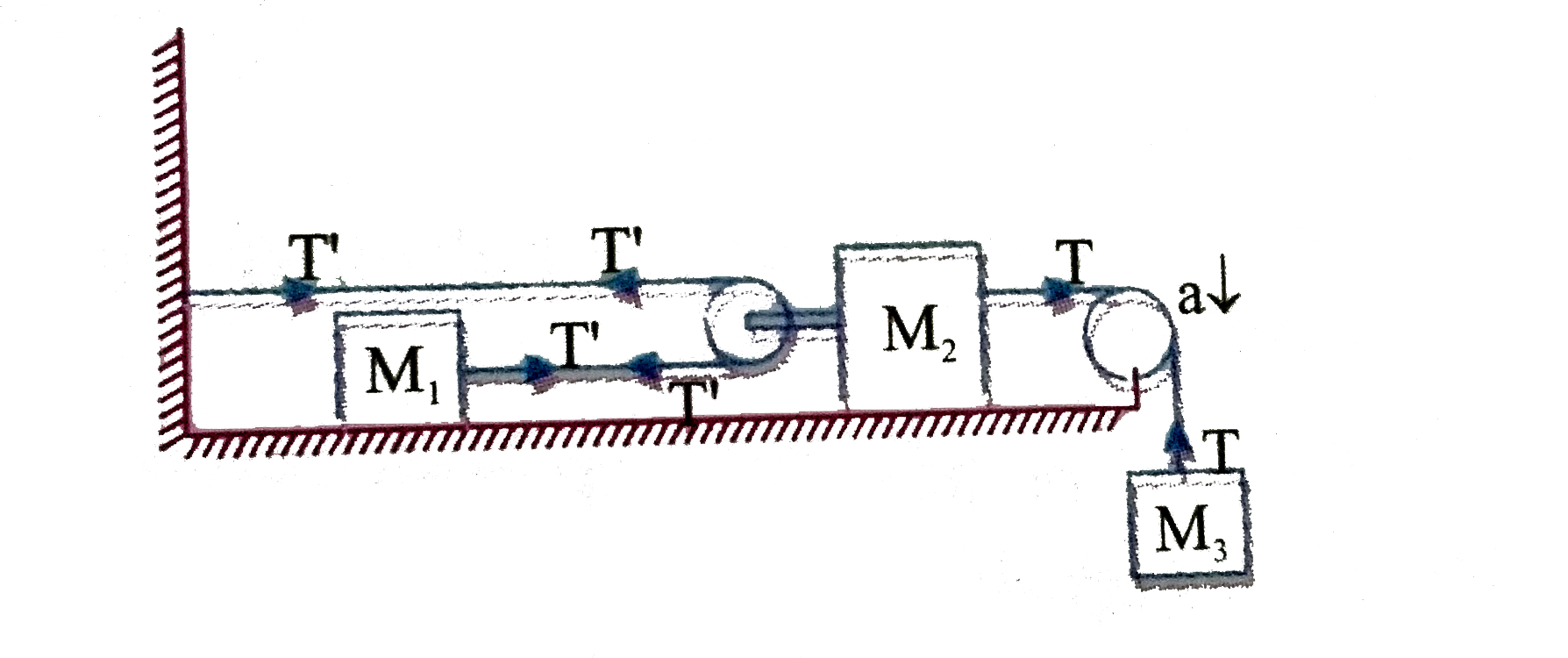In figure, find the velocity of m1 in ms−1 when m2 falls by 9m.

Given m1=m, m2=2m (take g=10ms−2).
Video Solution
Text Solution
The correct Answer is:4
From constrains we can show that if at any time velocity of m2 is v, then velocity of m1 will be 4v. Similarly, for displacement.
Applying work-energy theorem, Kf−Ki=Work done =W
12m2v2+12m1(4v)2=m2g×y−μm1g(4y),
where y=9m
⇒v=4ms−1

|
Topper's Solved these Questions
- WORK, POWER & ENERGYBook:CENGAGE PHYSICSChapter:WORK, POWER & ENERGYExercise:Archives (sinble Correct )
Explore 19 Videos
- WORK, POWER & ENERGYBook:CENGAGE PHYSICSChapter:WORK, POWER & ENERGYExercise:Archives(multiple Correct)
Explore 3 Videos
- WORK, POWER & ENERGYBook:CENGAGE PHYSICSChapter:WORK, POWER & ENERGYExercise:Linked Comprehension
Explore 55 Videos
- VECTORSBook:CENGAGE PHYSICSChapter:VECTORSExercise:Exercise Multiple Correct
Explore 5 Videos
Similar Questions
Knowledge Check
In a given figure the acceleration of M is (g=10ms−2)
 A203ms−2B17ms−2C803ms−2DNone of these
A203ms−2B17ms−2C803ms−2DNone of theseAt what angle should a body he projected with a velocity 24ms−1 just to pass over the obstacle 14m high at a distance of 24m [Take g=10ms−2]
Atanθ=19/5Btanθ=1Ctanθ=3Dtanθ=2In the arrangement shown in the all contact surfaces are smooth strings and pulleys are massless
Given M1=1kg,M2=2kg,M3=4kg and g=10ms−2
 .AThe acceleration of block of mass M3 is 4ms−2BThe acceleration of block of mass M1 is 4ms−2CThe tension (T) in the string connecting blocks of masses M3 and M2 is 24N .DThe tension (T) in the string connecting blocks of masses M1 and M2 is 24N .
.AThe acceleration of block of mass M3 is 4ms−2BThe acceleration of block of mass M1 is 4ms−2CThe tension (T) in the string connecting blocks of masses M3 and M2 is 24N .DThe tension (T) in the string connecting blocks of masses M1 and M2 is 24N .
Find the velocity of escape at the moon. Given that its radius is 1.7×106 m and the value of 'g' is 1.63ms−2.
View SolutionWhat are the angles of projection of a projectile projected with velocity 30ms−1, so that the horizontal range is 45 m ? Take g=10ms−2.
View SolutionA ball rolled on ice with a velocity of 14ms−1 comes to rest after travelling 20 m. Find the coefficient of friction. (Given g=9.8m/s2)
View SolutionA ball rolled on ice with a velocity of 14 ms−1 comes to rest after travelling 40 m . Find the coefficient of friction . (Given g=9.8m/s2
View SolutionA body is projected at 45∘ with a velocity of 20ms−1 has a range of 30m .The decrease in range due to air resistance is?(g=10ms−2)
View Solution